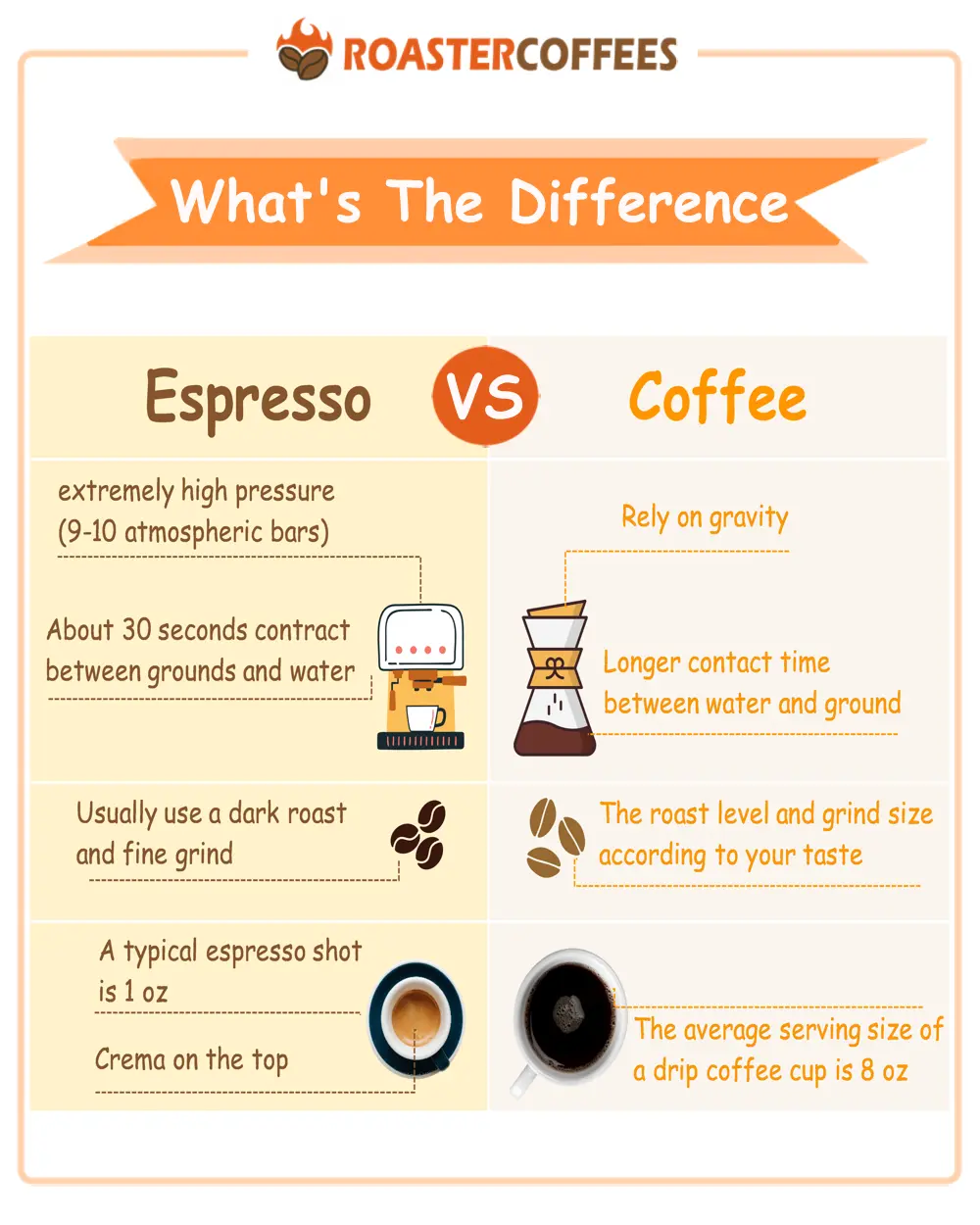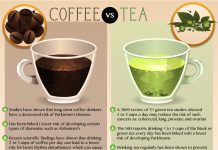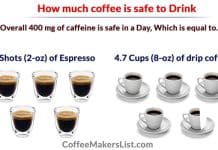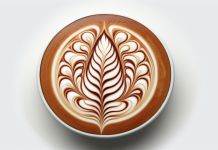Ah, the great debate of coffee connoisseurs: How is espresso different from regular coffee? Let’s dive into the world of coffee and explore the distinct qualities that set these two beloved beverages apart. From the preparation methods to the taste profiles, we’ll uncover the nuances that make espresso a unique and cherished part of the caffeine-loving community. So grab your favorite mug and join us on this flavorful journey through the world of coffee.
Roasting Method
Espresso Roast
Espresso roast refers to a specific level of roasting that is used specifically for making espresso. This roast is generally darker and more intense in flavor compared to regular coffee roast. The beans used for espresso roast are often a blend of different types of coffee beans, carefully selected and roasted to bring out the rich and robust flavors that are characteristic of espresso.
Regular Coffee Roast
Regular coffee roast, on the other hand, is a more general term that encompasses a range of roast levels. It includes light, medium, and dark roasts that are used to make regular brewed coffee. Unlike espresso roast, the beans for regular coffee roast are usually not blended and are selected based on their specific origin and flavor profile.
Grind Size
Fine Grind
When making espresso, a fine grind size is preferable. The coffee beans are ground into a powder-like consistency, which allows for a more efficient extraction of flavors and aromas during the brewing process. The fine grind size also helps to create a strong and concentrated espresso shot that is rich in flavor and has a thick, velvety crema.
Coarse Grind
For regular brewed coffee, a coarse grind size is typically used. This enables the water to flow through the coffee grounds more quickly and evenly, resulting in a smoother and less bitter cup of coffee. The coarser grind size also reduces the chances of over-extraction, which can lead to a burnt or unpalatable taste.
Brewing Time
Quick Extraction
Espresso is known for its quick extraction time. The water is forced through the finely ground coffee at a high pressure, typically taking only 25 to 30 seconds to brew a shot. This rapid extraction process extracts more concentrated flavors and aromas from the coffee, resulting in a rich and intense flavor profile that is unique to espresso.
Slow Extraction
In contrast, regular brewed coffee requires a longer brewing time. The water drips or is poured over the coarsely ground coffee, allowing for a slower extraction process. This extended contact time between the water and coffee grounds allows for a more balanced extraction, resulting in a milder and smoother flavor profile.
Brewing Method
Espresso Machine
Espresso is traditionally brewed using an espresso machine. This specialized equipment applies high pressure to force hot water through the finely ground coffee, creating a concentrated and flavorful shot of espresso. The espresso machine also plays a significant role in the formation of the crema, a characteristic layer of foam that adds richness and complexity to the espresso.
Drip Coffee Maker
Regular coffee, on the other hand, is commonly brewed using a drip coffee maker. This popular brewing method involves pouring hot water over the coarsely ground coffee beans, allowing the water to drip through a filter and collect in a pot or carafe below. Drip coffee makers offer convenience and simplicity, making it easy to brew larger quantities of coffee at once for multiple servings.
Brewing Pressure
High Pressure
Espresso machines are designed to generate high pressure, usually between 9 and 15 bars, during the brewing process. This high pressure is essential for extracting the flavors, oils, and compounds from the finely ground coffee beans in a short amount of time. The high pressure also contributes to the formation of the crema, which adds a layer of creaminess and enhances the overall flavor of the espresso.
Low Pressure
In contrast, regular coffee brewing methods do not require the use of high pressure. Drip coffee makers rely on gravity to allow the water to flow through the coffee grounds, resulting in a slower and more gentle extraction process. The absence of high pressure in regular coffee brewing contributes to a milder and less intense flavor profile compared to espresso.
Flavor Profile
Rich and Intense
Espresso is known for its rich and intense flavor profile. The combination of the fine grind size, quick extraction time, and high pressure brewing method results in a concentrated and robust espresso shot. Espresso often exhibits bold and complex flavors, with notes of chocolate, caramel, and a slight bitterness. The oils and compounds extracted during the brewing process contribute to the full-bodied and intense nature of espresso.
Balanced and Milder
Regular brewed coffee tends to have a more balanced and milder flavor profile compared to espresso. The coarser grind size, slower extraction time, and lower pressure brewing method result in a smoother and less concentrated cup of coffee. Regular coffee offers a wide range of flavors, depending on factors such as the bean origin, roast level, and brewing technique. It can be enjoyed with subtle notes of fruits, nuts, or spices, creating a more nuanced and approachable flavor experience.
Caffeine Content
Higher Caffeine Concentration per Volume
Espresso has a higher caffeine concentration per volume compared to regular brewed coffee. The concentrated nature of espresso, combined with the use of finely ground coffee and high-pressure extraction, results in a higher caffeine content in each serving. However, it’s important to note that the serving size of an espresso shot is much smaller than a cup of regular coffee, so the overall caffeine intake may vary depending on the size and number of servings consumed.
Lower Caffeine Concentration per Volume
Regular brewed coffee, on the other hand, has a lower caffeine concentration per volume compared to espresso. The larger serving size of a cup of coffee, combined with the less concentrated brewing method, results in a lower caffeine content in each serving. Nevertheless, regular coffee still provides a significant amount of caffeine and offers a more extended period of stimulation compared to the quick jolt of energy often associated with espresso.
Serving Size
Smaller Serving Size
Espresso shots are typically served in small demitasse cups, with a serving size ranging from 1 to 2 ounces. The smaller serving size is intentional, as espresso is meant to be enjoyed in small, concentrated sips. This allows the espresso drinker to appreciate the intense flavors and aromas without becoming overwhelmed by the robustness of the beverage. The smaller serving size also makes espresso an ideal choice for those who prefer a quick and potent caffeine boost.
Larger Serving Size
Regular brewed coffee is often served in larger cups or mugs, with a typical serving size ranging from 8 to 12 ounces. The larger serving size of regular coffee allows for a more leisurely and extended coffee-drinking experience. It provides a comforting and familiar routine to savor the flavors and enjoy the warmth of a freshly brewed cup of coffee. The larger serving size of regular coffee also allows for the addition of milk, sweeteners, or other flavorings to customize the taste according to personal preferences.
Crema
Characteristic Layer of Foam
One of the distinguishing features of espresso is the crema, a characteristic layer of foam that forms on top of the espresso shot. The crema is created during the high-pressure extraction process in an espresso machine. It is composed of small bubbles of gas, coffee oils, and suspended coffee particles, which rise to the surface of the espresso and form a velvety layer of foam. The crema adds a silky texture, visual appeal, and complexity to the espresso, making it a defining characteristic of a well-brewed shot.
Absence of Crema
Regular brewed coffee does not typically produce a layer of crema. Since regular coffee is brewed using a slower and gentler extraction method, the formation of crema is not a natural occurrence. However, this does not diminish the quality or flavor of regular brewed coffee. The absence of crema allows for other aspects of the coffee, such as its aroma, flavors, and body, to take the forefront and be appreciated in their own right.
Uses
Base for Various Coffee Beverages
Espresso serves as the foundation for a wide array of coffee beverages. From classic favorites like cappuccinos, lattes, and macchiatos to modern creations like flat whites and cortados, espresso provides the strong and concentrated base that forms the heart of these drinks. The rich and intense flavor profile of espresso blends perfectly with steamed milk, creating a harmonious balance of flavors and textures that can be customized to suit individual preferences. The versatility of espresso makes it an indispensable component in the world of specialty coffee.
Stand-Alone Beverage
While espresso is often used as a base for other coffee beverages, it can also be enjoyed on its own. Many coffee enthusiasts appreciate the bold and concentrated flavors of a well-brewed shot of espresso. Sipping on an espresso allows one to fully immerse themselves in the depth and complexity of the coffee, appreciating its nuances and experiencing a jolt of energy in a compact package. Espresso shots are commonly consumed as a pick-me-up or as a small indulgence in moments when a quick caffeine boost is desired.
In conclusion, espresso and regular coffee differ in various aspects, ranging from the roasting method to the serving size. The choice between the two ultimately depends on personal preferences, desired flavor profiles, and brewing methods available. Whether you prefer the rich and intense experience of an espresso shot or the milder and more leisurely enjoyment of regular brewed coffee, both options offer a delightful and satisfying cup of joe. So next time you crave a coffee, consider the distinct characteristics of espresso and regular coffee, and choose the one that suits your mood and taste buds.










































